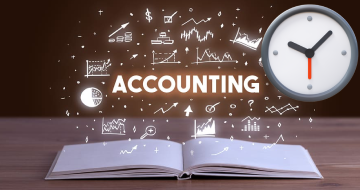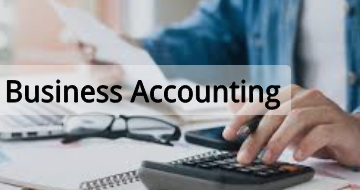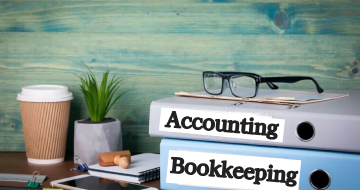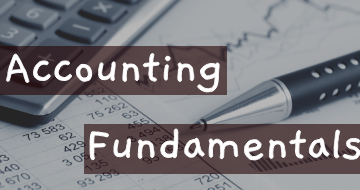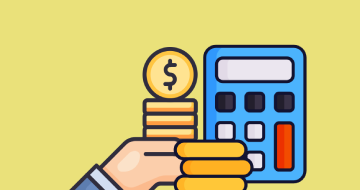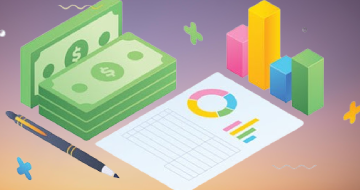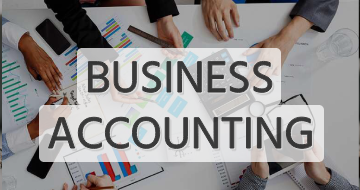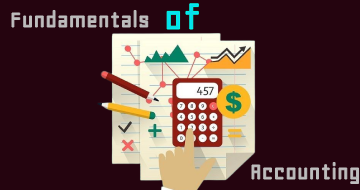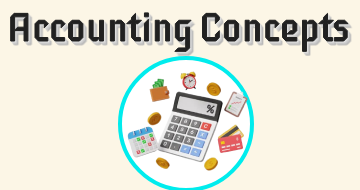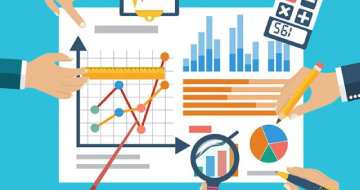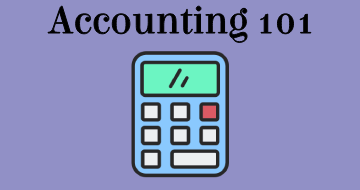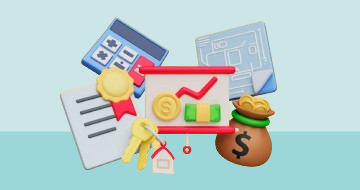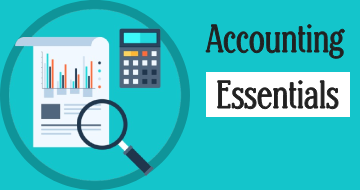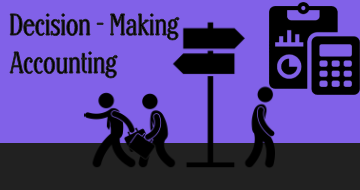IIRF Online > Finance & Accounting > Accounting & Bookkeeping > Accounting > Accounting & Bookkeeping Masterclass - Beginner to Advanced
Accounting & Bookkeeping Masterclass - Beginner to Advanced by Udemy
Accounting, Bookkeeping Introduction, Accounting, Bookkeeping Entries, Accounting, Bookkeeping Adjustments & Reports
Course Highlights
- Bookkeeping | Rules of recording transactions
- Accounting | Accounting Concepts | Period end Adjustments
- Financial Statements Preperation | Profit & Loss Statement | Balance Sheet
- Depreciation | Depreciation methods | Accounting for Depreciation
- Inventory | Inventory Valuation methods | Inventory Accounting
- Accruals & Prepayments
- Bad and doubtful debts
- Bank reconciliation
Skills you will learn!
Curriculum
9 Topics
Understanding Accounting
Key classes and terms in Accounting
Understanding Profit & Profit & Loss Statement
Understanding Owner's Capital & Balance Sheet
Seperate Entity Concept
Liabilities and Owner's Capital
Understanding Dual Impact of a Transaction
The Accounting Equation
Key Terms/classes in Accounting
8 Topics
Recording in Accounting
Recording Debit and Credit for Assets - Practice
Debit and Credit rules for Liabilities Owner's Capital Income & Expenses
Alternative way to understand and remember debit/credit rules
Double Entry Accounting/Bookkeeping with Debit & Credits
Debit & Credit Practice
Journal Entry
Practice - debits and credits
6 Topics
Introduction
Recording Journal Entries
Posting Entries to the Ledgers
From ledgers to the Trial Balance
Preparing Profit and Loss Statement
Preparing Balance Sheet
7 Topics
Understanding and classifing Assets
Classifing Assets based on their physical substance
Understanding and classifing Liabilities
The Formal Balance Sheet Format
Understanding and classifing Income
Understanding and classifing Expenses
The Formal Profit & Loss Statement Format
5 Topics
Financial Statements
Closing ledgers for the month
Transferring balances to the next month ledgers
Homework: End to End Accounting & Bookkeeping- November
Homework Answers
9 Topics
Understanding Reconciliation
Impact of Bank Reconciliation
Understanding Bank Statement
Bank Reconciliation Case 1 and Case 2
Bank Reconciliation Case 2 Part 2
Bank Reconciliation Part 3
Practice - Bank Reconciliation
Understanding Positive and Negative Balance terms
Complete Bank Reconciliation Assignment
5 Topics
Understanding Cash and Credit Transaction
Cash and Accrual Accounting
Cash and Accrual Accounting - Examples
Understanding Receivables and Payables
Understanding Trade and Other Receivables/Payables
11 Topics
Introduction and recording Cash Expenses
Recording Credit Expenses
Recording Cancellation/Reversal of Credit Expenses
Recording Payment to Payables
Recording Interest charged for late payment
Accounting for Trade Discount
Accounting for Cash Discount
Practice - End to end Bookkeeping Accounting & FS for Expenses
Closing entries for April
May 2021 - Bookkeeping Accounting & Financial Statements
Key documents related to Expenses and Payables
19 Topics
Introduction
Recording Cash Income and its Reversal
Recording Credit Income and reversal
Recording Cash Received from Receivables
Interest charged to Receivables for late payment
Accounting for Trade Discount
Accounting for Cash Discount
Accounting for Bad Debts
End of Beginners Level
Understanding Doubtful Debts and Allowance for Doubtful Debts
Other terms for Allowance for Receivables
Accounting for the Allowance for Doubtful Debts
Understanding Gross and Net Receivables
Recording the Allowance - Detailed Example
Increasing the Allowance
Practice - Allowance for Doubtful Debts - Year 3
Recording Allowance for Doubtful Debts
Journal Entry and Period End Adjustments
Introduction to Adjusting Entries | Understanding Accounting & Bookkeeping Cycle
10 Topics
What is Sales tax?
Who can collect Sales tax?
What to do with the collected Sales tax?
Accounting for Sales tax on Income
Accounting for Sales tax on Expenses
Practice - Sales tax Bookkeeping and Accounting
Sales tax Bookkeeping and Accounting - month 3
Understanding VAT as a system
Basic maths to convert Gross Amount to Net Amount
Sales Tax
13 Topics
Understanding Prepayments
Prepayments - Understanding Cashflows Prepaid Expense and Prepaid Balance
Accounting for Prepaid Expenses
Monthly/Quarterly Reporting
Note: Month-End Adjustments
Prepaid Income - Overview and cashflows
Accounting for Prepaid Income
Before we start Accruals Accounting
Understanding Accruals
Accrued Expenses - Overview and Cashflows
Accounting for Accrued Expenses
Accrued Income - Overview and Cashflows
Accounting for Accrued Income
35 Topics
Introduction to Non-Current Assets
Introduction to Accounting for NCAs
Accounting for Purchase of NCAs
Fall in the value of asset - Depreciation
Understanding basic terms related to the NCA depreciation
Note:
Straight line method of depreciation
Example - straight line depreciation
Understanding Accumulated depreciation & Net Book Value
Depreciation method 2 - Reducing Balance Method
Practice - Reducing balance method
Mathematical shortcuts - reducing balance method
Calculating depreciation rate - reducing balance method
Depreciation method 3: Number of units method or machine hours method
Depreciation method 4: Sum of Years Digits Method
Example: Sum of years digits method
Choosing a method of Depreciation
Sales or Assets > Gain or loss on disposal
Example - Gain or loss on disposal
Accounting for NCA
Accounting for NCA - Example
Accounting for NCA - Homework
Methods of Accounting for NCA
Methods of Accounting - Asset Account maintained at Cost - Example
Homework - Asset Account at Cost - Accounting entries
Depreciation and accounting entries - Practice
Depreciation for Assets purchased and sold between the year
Example of Method 1 for Assets Purchased/Sold between the year
Example of Method 2 for Assets Purchased/Sold between the year
Asset purchased/sold between the year - Example with Reducing Balance method
Asset purchased/sold between the year - Example with Reducing balance method 2
Depreciation of land
Revaluation of Assets
Accounting for upward revaluation
Accounting for downward revaluation
17 Topics
Understanding Trading Business and Key Terms
Accounting for Purchases
Accounting for Sales
Inventory Accounting Systems and Periodic System of Inventory Accounting
Periodic System of Inventory Accounting - Example
Perpetual System of Inventory Accounting
Perpetual System of Inventory Accounting - Example
Inventory Valuation Methods
LIFO - Periodic Inventory Accounting
LIFO - Perpetual Inventory Accounting
Weighted Average under Periodic Inventory Accounting
Weighted Average under Perpetual Inventory Accounting
FIFO with Periodic and Perpetual Inventory Accounting
Recording Inventory damage obsolescence and theft
Understanding Net Realizible Value
Writing down inventory value to NRV
Example - writing down inventory
22 Topics
Introduction to the type of business and limited liability
Understanding Company Ownership and Shares
Understanding Face Value of a Share
Note: Other terms used for face value
Accounting for Issue of shares (at par)
Accounting for Issue of shares at Premium
Accounting for issue of shares at discount
Right issue of shares
Bonus issue of shares
Important notes about Shares
Understanding Dividend
Accounting for Dividends
Accounting for Dividends - Example
Understanding Capital
Understanding Bonds
Accounting for Bonds
Accounting for Bank Loan
Understanding Equity and Reserves
Reclassification of Reserve
Understanding statutory and non-statutory reserve
Statement of Changes in Equity
Practice session
8 Topics
Introduction to lease
Types of Lease
Accounting for Operating Lease
Understanding Finance Lease payments
Accounting concept guiding finance lease accounting
Accounting for Finance Lease - Lessee
Accounting for Finance Lease - Lessor
Fun lecture - lease calculations
4 Topics
Profit percentage
Markup and Margin Example
Converting Markup to Margin and vice versa
Markup and Margin practice
7 Topics
What are Financial Statements why are they so Important and valuable
Basic 'Profit & Loss Statement' revision
Understanding Operating & Non-operating Income and Expenses
Profit & Loss Statement - Complete Structure
Balance Sheet - Revision
Statement of Changes in Equity - Revision
Cash Flow Statement
19 Topics
Cash Flow Statement - Introduction
Cash Flow Statement - Quick Example
Cash Flow from Investing Activities
Cash Flow from Financing Activities
Cash Flow from Operating Activities
Cash Flow from Operating Activities - Indirect Method
Increase in Receivables
Increase in Payables
Increase in Inventory and Payables
Cash Flow Statement - Complete format
Cash Received from raising new Loans
Cash Received from the issue of Shares
Calculating Cash paid in the Interest Payment
Calculating Cash paid in the Tax Payment
Calculating Cash Paid for the Purchase of Non-Current Assets
Preparing Complete Cash Flow Statement - 2019
Preparing Cash Flow Statement - 2020
Preparing Cash Flow Statement - 2021
Preparing Cash Flow Statement - Fun time
14 Topics
Understanding Financial Analysis
Understanding Horizontal Analysis & Analyzing Income Statement Horizontally
Horizontal Analysis of Balance Sheet
Understanding Vertical Analysis and Analyzing Income Statement Vertically
Vertical Analysis of Balance Sheet
Introduction to Accounting Ratios
Asset turnover
Profit Margin
Return on Assets
Return on Capital Employed
Return on Equity
Calculating Ratios - Practice
Analyzing Liquidity - Cash Ratio Current Ratio and Quick Ratio
Operating Efficiency Ratios
6 Topics
Introduction - Understanding where is the difference
Understanding Cost per Unit and Cost Unit
Understanding Direct Costs & Indirect Costs
Absorption of Overheads on Products - Absorption Costing
Costing - Calculating Cost per Unit - Example
Journal Entries to record the Production Costs in different stages
1 Topic
Bonus lecture

Accounting & Bookkeeping Masterclass - Beginner to Advanced
